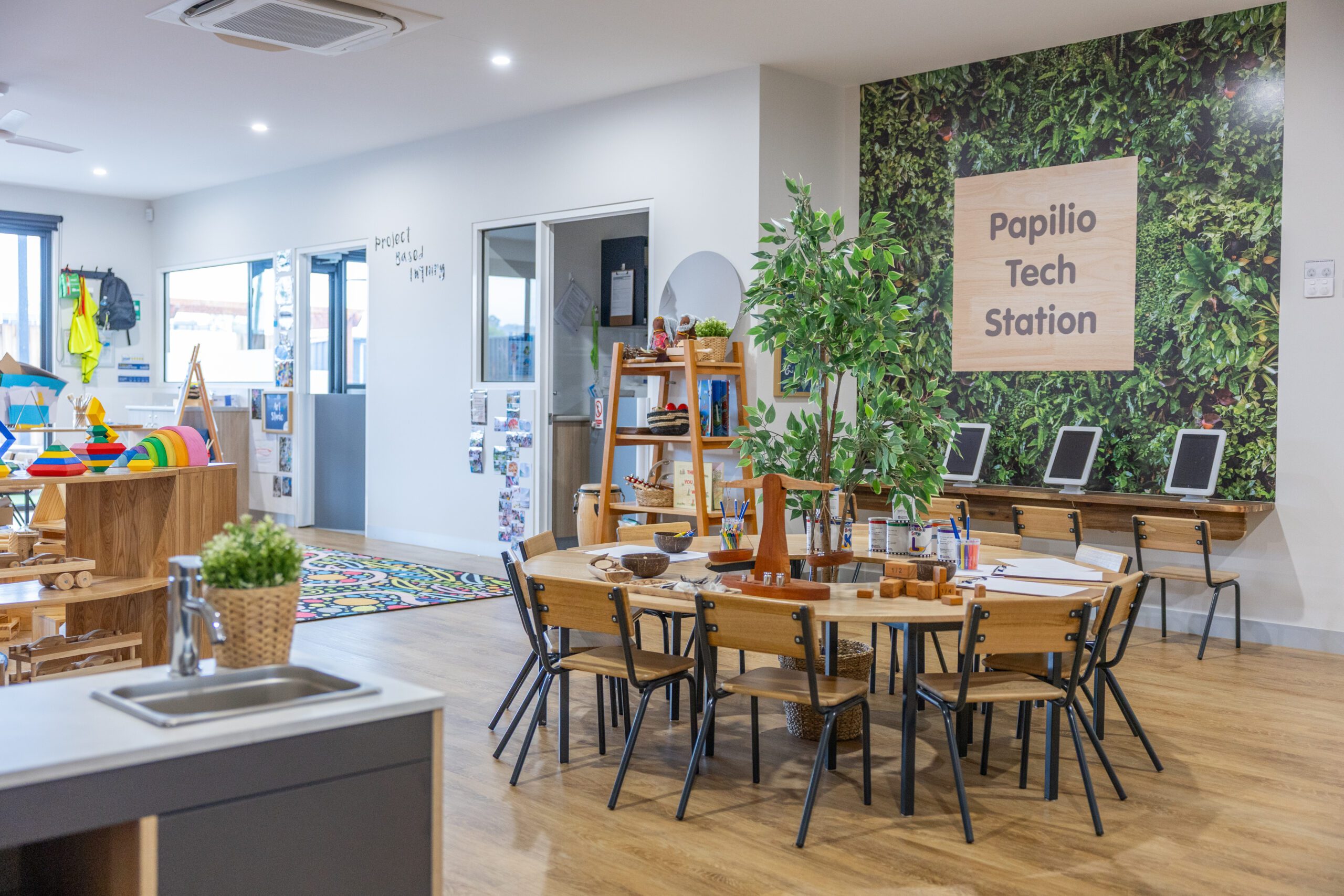
Quick Takeaways
- Under 2 years: Avoid screen time (except video calls).
- Ages 2-5: No more than one hour per day of recreational screen time - less is better.
- Quality over quantity: Shared, purposeful use of screens supports learning and communication.
- Technology with intention: Papilio integrates tools like Mathseeds, Reading Eggs, and the Early Years Toolbox to build confidence and digital literacy.
- Aligned with EYLF V2.0: Every digital experience connects to key outcomes in communication, identity, and wellbeing.
Purposeful Technology in the Early Years
In today’s world, screens are everywhere, from video calls with grandparents to digital storybooks and classroom smart screens. For families with young children, the question isn’t whether technology should be used, but how to use it meaningfully.
At Papilio Early Learning, we believe digital tools can enhance, not replace, real-world learning. Guided by the Early Years Learning Framework (EYLF V2.0) and our Lifelong Learning Curriculum, our educators model healthy digital habits and help children develop essential skills for a connected, confident future.
What the Guidelines Say
Australia’s 24-Hour Movement Guidelines recommend:
- Under 2 years: No sedentary screen time (except for video calls with loved ones).
- Ages 2-5: No more than one hour per day of recreational screen time - less is better.
- Movement and social play are essential throughout the day.
These recommendations, supported by the Australian Department of Health, aim to balance digital access with the play, rest, and connection children need to thrive.
The eSafety Commissioner reminds families that it's not just ow much time children spend on screens, but how they use them. Co-viewing, asking questions and linking what they see to real-world play all strengthen communication and learning. These national recommendations guide the way Papilio uses technology in our classrooms, with purpose, balance, and curiosity in mind.
Building Digital Literacy with Intention
At Papilio, we understand that technology is an integral part of modern life, and when used thoughtfully, it helps children develop the digital literacy and critical-thinking skills they’ll need at school and beyond.
Our approach ensures that digital experiences are:
- Interactive: Children engage with educators, not just screens.
- Intentional: Every use has a clear learning outcome linked to EYLF V2.0 and the Lifelong Learning Curriculum.
- Balanced: Screen use is brief, collaborative, and complemented by real-world exploration.
In practice, that means:
- Reading Eggs and Mathseeds (included in enrolment) support early literacy and numeracy through play-based activities that extend learning beyond the classroom.
- The Early Years Toolbox, developed by the University of Wollongong, helps educators assess and strengthen children’s cognitive and social skills through research-backed observation tools.
- Smart screens are used in small-group settings, perhaps to explore animal habitats after outdoor play, or to revisit a shared group story, always supported by conversation and hands-on follow-up learning.
Each digital interaction helps children make sense of the world, developing confidence in navigating technology responsibly and creatively.
How It Aligns with the EYLF V2.0
Our approach to digital learning directly supports the five EYLF learning outcomes, particularly (Outcome 4 and 5):
- Children have a strong sense of identity - they see technology as one of many tools for expression and connection.
- Children are connected with and contribute to their world - they explore digital media to understand communities, cultures, and ideas.
- Children have a strong sense of wellbeing - screen time is balanced with movement, mindfulness, and outdoor play.
- Children are confident and involved learners - technology becomes a medium for creativity, curiosity, and discovery.
- Children are effective communicators - using digital platforms to share stories, create art, and develop early literacy.
This balance between the physical and digital world ensures children grow up as capable, confident learners, equipped to thrive in an evolving world.
Supporting Families at Home
We know families are navigating screen use every day, and we’re here to help. Try these simple swaps and habits at home:
- Swap before-bed TV for storytime. Shared reading builds language and helps children wind down naturally.
- Use car time for music or conversation. Talk about what you see outside or listen to a short audiobook together.
- Create a “busy box” for after-work or dinner prep - simple play materials that encourage imagination over screens.
- Make movement part of your routine. Short dance sessions or yoga stretches are great ways to connect and refocus after screen time.
The eSafety Commissioner also recommends keeping devices out of bedrooms and turning them off an hour before bedtime - small steps that make a big difference to rest and wellbeing.
Thoughtful, Balanced, and Future-Ready
Technology will always be part of our children’s world, but how we introduce it shapes how they use it. At Papilio, we’re proud to model thoughtful, research-based digital learning that empowers children to explore, imagine, and grow.
If you’d like to learn more about how Papilio integrates digital tools like MathSeeds, Reading Eggs, and the Early Years Toolbox into our curriculum, we invite you to book a tour or chat with your local centre team.
Together, we can raise a generation of curious, confident, and compassionate digital citizens, on-screen and off.